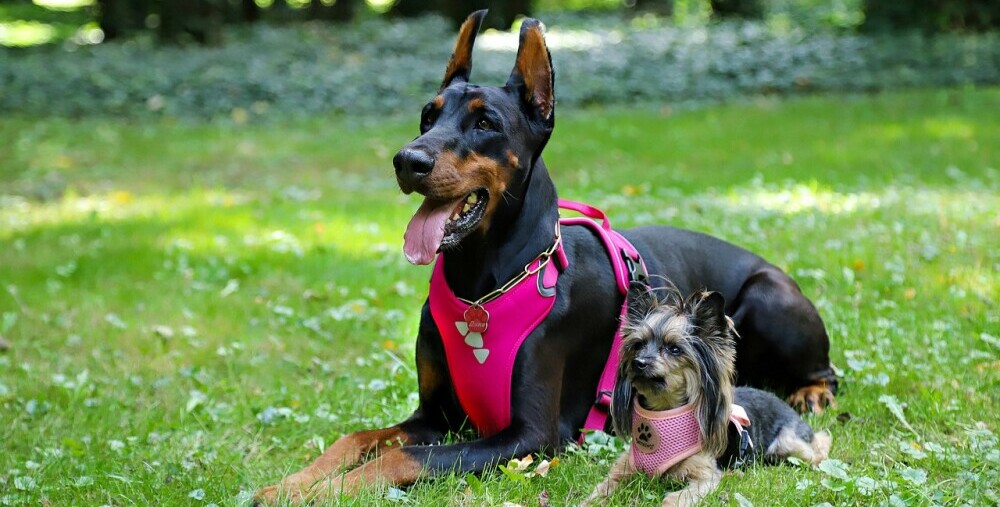I’m here to help you navigate through the sea of choices when it comes to dog collars and harnesses. You’re going to find out about how to make an informed decision that ensures your furry friend’s comfort and safety. This isn’t just about a strap around the neck or a snug fit over the shoulders; it’s also about understanding what works best for the unique needs of your pet.
First off, let’s talk about what collars and harnesses do. At a basic level, they both serve to attach your dog to a leash, which is crucial for control and safety during walks. But that’s just the beginning. They also play vital roles in identification, fashion, and as tools for training to ensure your dog’s well-behaved in public spaces.
Your choice between a collar and a harness can also influence your dog’s health and behavior in significant ways. For instance, a collar might be fine for a calm breed that doesn’t pull much, but what if you have a pooch who’s a bundle of energy? That’s when the conversation gets interesting.
The Ins and Outs of Dog Collars

When you think of a pet dog, the classic image of a collar and leash probably pops into your head. That’s because collars have been the go-to accessory for dogs for a long time. They’re like the old reliable of the dog world. But it’s not just about tradition, it’s also about functionality. Collars serve as a handle for leashes, a place for ID and vaccination tags, and of course, they can be a fashion statement.
Now, here’s the upside of using collars. They’re super simple to use; just buckle or clip it around your dog’s neck, and you’re set. There’s no shortage of types either. Whether you want something durable, fashionable, or even tech-savvy with GPS capabilities, there’s a collar out there for you. Plus, dogs tend to get used to them quickly, which is great for puppies that are adjusting to wearing something around their necks.
But there are some downsides to consider. Collars can put a lot of pressure on your dog’s neck, especially if Fido likes to pull. This could lead to strain or injury over time. If your dog is a little Houdini, a collar may not be secure enough to prevent escape. And for training? Well, collars don’t always offer the level of control needed to correct behavior.
Let’s talk about the different collars you might come across. The flat collar is your standard fare, perfect for a casual walk. Martingale collars, on the other hand, are designed to tighten under tension but not to the point of choking, providing a safer option for escape artists. And there are smart collars supplied with GPS which is tool to dog tracking and activity monitoring.
Harnessing Control: The Advantages and Drawbacks of Dog Harnesses

If you’ve spent any time around dog owners or perused the aisle of a pet store, you know harnesses are a pretty big deal. They’ve become increasingly popular, especially for owners of puppies or dogs that pull on walks. Beyond the trend, though, there are solid reasons to consider using a harness.
I’m going to start with the good stuff. Harnesses provide exceptional control over your pet, which is gold for training or managing a dog that loves lunging after squirrels. They distribute pressure over a larger area of your dog’s body, reducing strain on their neck and back, which makes them a wise choice for dogs with respiratory issues or neck injuries.
But that’s not all. For the short-nosed, or brachycephalic, breeds like pugs and bulldogs, harnesses can be a lifesaver. These breeds can have difficulty breathing, and a collar might exacerbate that issue. So, switching to a harness could literally help them catch their breath easier on walks.
Now for the flip side. Even though harnesses come off as heroes of the canine accessory world, they aren’t perfect. Some can be complicated to put on, particularly if you have a wriggly pup or a complex design. They can also chafe or irritate the skin if not fitted properly or if your dog wears it for too long.
You might also think a harness will stop your dog from pulling. Sometimes, it doesn’t quite work out that way. Some dogs might pull even more because they don’t feel the same pressure on their neck as they would with a collar. And if Fido gets really enthusiastic, he could get a bit of a Houdini act going and slip out of a poorly fitted harness.
Let’s break down the different types you’ll find: front-clip harnesses discourage pulling because they steer the dog back towards you when they try to pull ahead. Back-clip harnesses are more comfortable for the dog and easier to put on, but they don’t give much feedback against pulling. And then there are multi-clip harnesses that offer versatility because you can choose where to clip the leash based on what your walk demands.
So, what do you reckon? Are harnesses making the case strong enough for your furry friend? In the next section, I’m going to help you weigh these pros and cons with the specific needs of your pup in mind. Since one size never fits all in the world of dog gear, it’s worth seeing how each option might suit your unique situation.
Making the Informed Choice: Which is Right for Your Dog?

I’m here to help you navigate the choice between a collar and a harness for your furry friend. It’s not just about style or training—it’s also about your dog’s health and comfort. To make an informed decision, consider your dog’s breed, behavior, and size. A tiny Chihuahua may need a different approach than a stout-hearted Labrador.
Particularly for dogs with specific health considerations—like breathing issues or a sensitive trachea—choosing a harness might be the best. Similarly, if you’re successfully training your dog using positive reinforcement, a standard collar may be sufficient. The context of your dog’s needs and your training methods is crucial.
You also want to factor in your personal preferences and lifestyle. If you’re constantly on the go, a harness that’s quick to put on and secure might be your best bet. Choose something that resonates with you and aligns with your daily routine. After all, convenience can foster consistency, which is vital for your pet’s adaptation.
Don’t forget to check the quality and fit of whatever you choose. A safe bet is to consult your vet, especially if your dog has unique medical needs. You can always adjust your approach down the road as you gather more insights about what works best for you and your pet.
In conclusion, the correct choice between a dog collar or harness hinges on a balance of function, safety, and comfort, both for your pet and you. Above all, remember that your choice reflects your care and commitment to your canine companion’s well-being. Whatever you pick, do so with love and consideration, keeping in mind that your first attempt doesn’t need to be your last. Your dog’s wagging tail will be the best indicator you’ve made the right decision.
